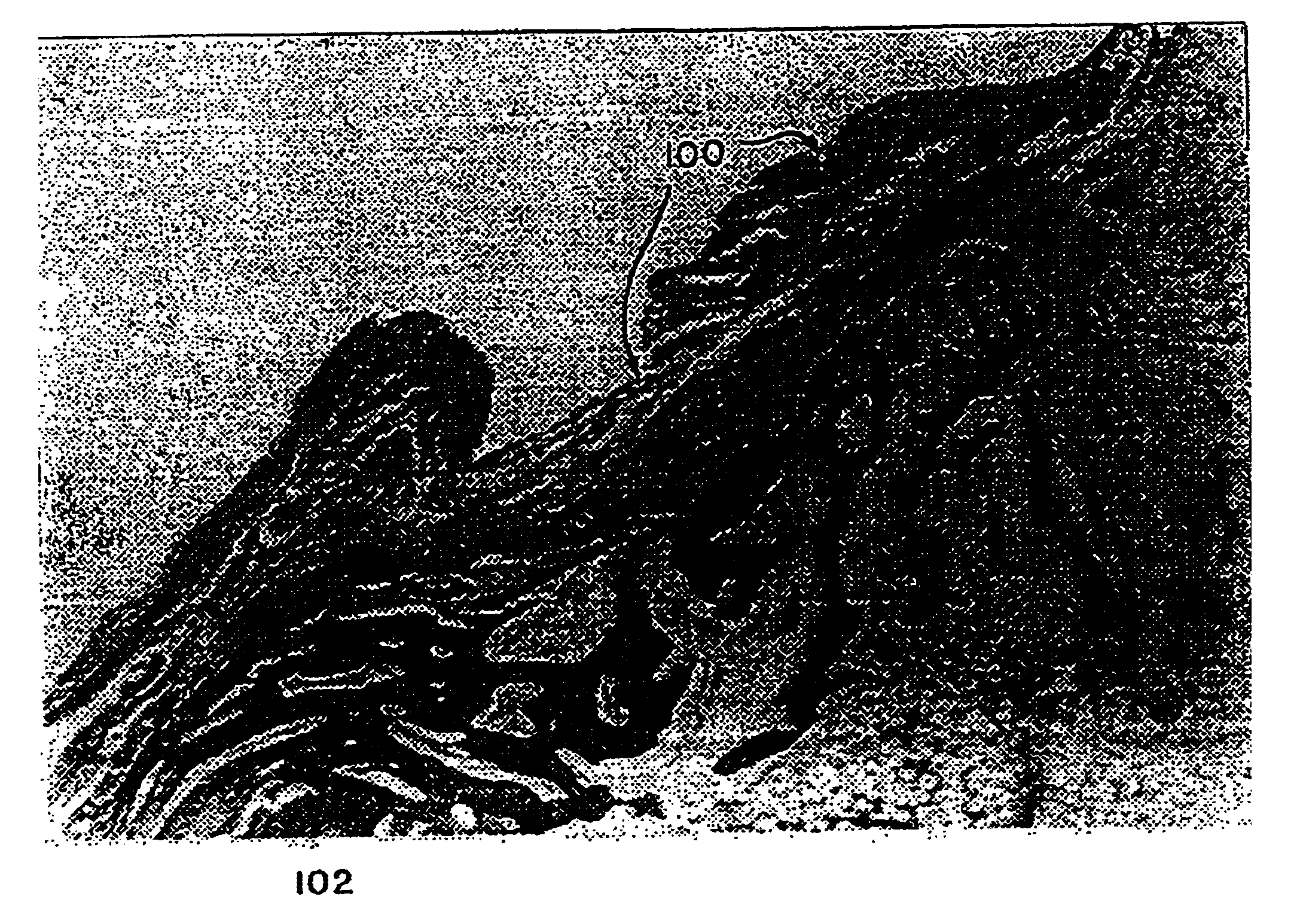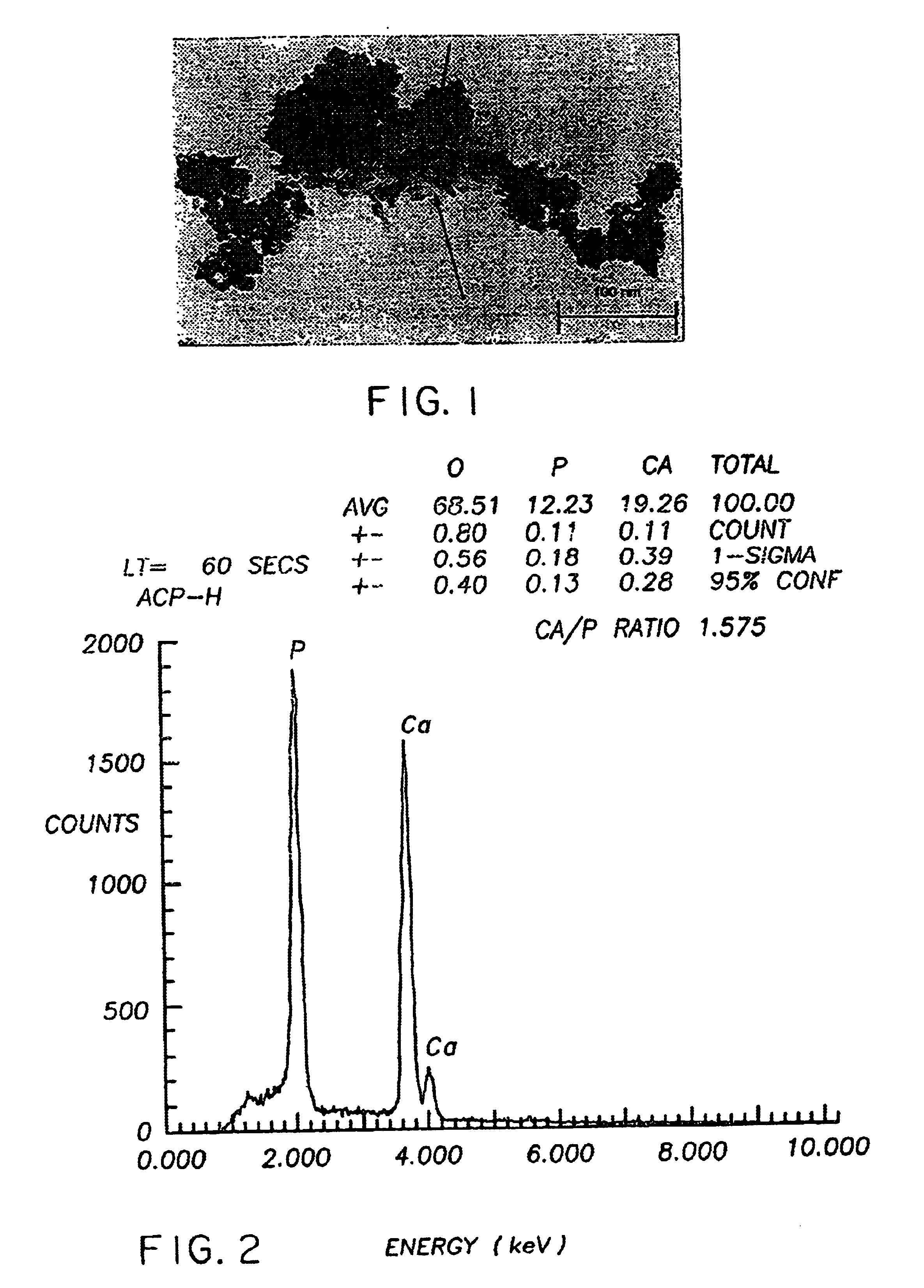Method of preparing a poorly crystalline calcium phosphate and methods of its use
- Summary
- Abstract
- Description
- Claims
- Application Information
AI Technical Summary
Benefits of technology
Problems solved by technology
Method used
Image
Examples
example 1
[0235]Production of PCA calcium phosphate using an ACP and participating promoters. This example demonstrates the hardening properties and PCA calcium phosphate formation from ACP using a number of different participating promoters. Highly reactive ACP was prepared according to Example 5.
[0236]The nanocrystalline hydroxyapatite of samples 1-1, 1-2 and 1-3 were prepared without inhibitors of crystallization as follows: 218 g of disodium hydrogen orthophosphate (Na2HPO4. 12H2O) were dissolved in 1200 mL of solution of distilled water. For carbonated PCA calcium phosphate of samples 1-1 and 1-2, 80 g of NaHCO3 were also added to this solution. 70 g of calcium nitrate [Ca(NO3)2. 4H2O] were dissolved in 500 mL of distilled water. The calcium solution was quickly poured into the phosphate solution at room temperature with constant stirring. Precipitation was immediate and substantially complete. The pH of the precipitate was adjusted to 7.4 by the addition of sodium hydroxide solution in ...
example 2
[0242]This example demonstrates the use of a neutral apatitic calcium phosphate as a promoter for the conversion of ACP to the inventive PCA calcium phosphate to promote bone growth in vivo. Stoichiometric hydroxyapatite is mixed with reactive ACP as described in Example 1-4. Hydrated precursor paste is applied to animal subjects as described in Examples 15, 16 or 19. Bone healing and biocompatibility is monitored as described at the time points indicated.
example 3
[0243]This example demonstrates the production of PCA calcium phosphate from ACP using a number of different passive promoters.
[0244]Highly reactive ACP was prepared according to Example 5. ACP was mixed with the specific promoter at a ratio (wt / wt) of about 5:1 or 1:1 (see Table 2) for 5 minutes in a SPEX laboratory mill. Water (0.75-0.85 mL) was added and mixed to form a putty. The mixture was then formed into a ball, wrapped in moist tissue paper and heated to 37° C. for at least 30 minutes. After 30 minutes and at various time points thereafter the paste was monitored for hardness. FIG. 13 is a representative XRD from sample 2-4 employing an alumina promoter. In this figure the alumina peaks can be seen superimposed over the standard PCA calcium phosphate profile.
[0245]
TABLE 2ACP Conversion Using Passive PromotersPassivePCA*PCA*studyPromoterIncubationExtent ofbyby#(ACP:promoter)time at 37° C.HardeningFTIRXRD2-1SiO2 (5:1)30 minsoftyesyes 3 hrsvery hard2-2Mica (5:1)30 minsoftyesye...
PUM
| Property | Measurement | Unit |
|---|---|---|
| Grain size | aaaaa | aaaaa |
| Grain size | aaaaa | aaaaa |
| Volume | aaaaa | aaaaa |
Abstract
Description
Claims
Application Information
 Login to View More
Login to View More - R&D
- Intellectual Property
- Life Sciences
- Materials
- Tech Scout
- Unparalleled Data Quality
- Higher Quality Content
- 60% Fewer Hallucinations
Browse by: Latest US Patents, China's latest patents, Technical Efficacy Thesaurus, Application Domain, Technology Topic, Popular Technical Reports.
© 2025 PatSnap. All rights reserved.Legal|Privacy policy|Modern Slavery Act Transparency Statement|Sitemap|About US| Contact US: help@patsnap.com



